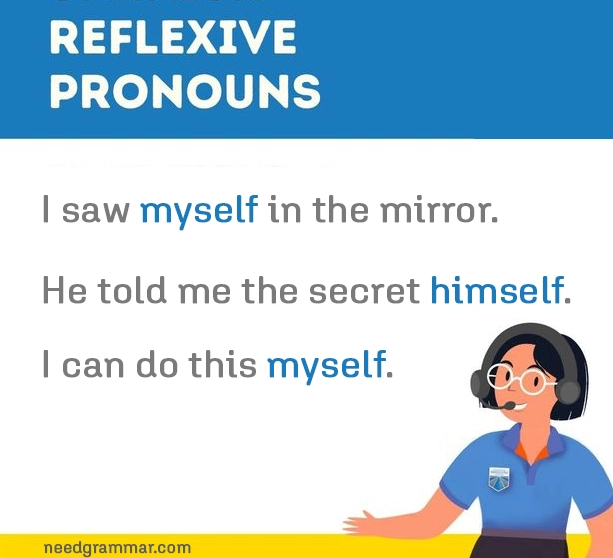What are Reflexive Pronouns?
Reflexive pronouns emphasize the subject or object of a sentence by referring to the same person or thing. They always end in -self or -selves. Essentially, reflexive pronouns show when the object of a sentence is simultaneously also the subject of a sentence. The term reflexive indicates that a reflexive pronoun reflects back upon a sentence’s subject.
Types of Reflexive Pronouns
There are nine reflexive pronouns in the English language are:
myself, yourself, himself, herself, oneself, itself, ourselves, yourselves, and themselves.
They can function as a direct object or indirect object in a sentence. Each of these can also act as an intensive pronoun, as explained further below.
Reflexive Pronouns as Direct Object:
- I saw myself in the mirror.
- We treated ourselves to ice cream at the beach.
- She gave herself a haircut and now she looks ridiculous.
Reflexive Pronouns as Indirect Object:
- Eric made breakfast for himself this morning.
- They decided to keep all of the apples for themselves.
- We built this custom house for ourselves to enjoy.
Finally, there is the category of intensive pronouns, which are reflexive pronouns used to emphasize the subject, often to indicate that they completed the action as opposed to someone else.
It’s easy to tell when a word ending in -self or -selves is being used as an intensive pronoun, since you can remove it without any significantly change in the meaning of the sentence.
Example:
- Sarah drives herself to school now that she turned sixteen years old.
- The King himself attended the event last weekend.
- He told me the secret himself.
- The Prime Minister herself got the vaccine on television to reassure the public.

